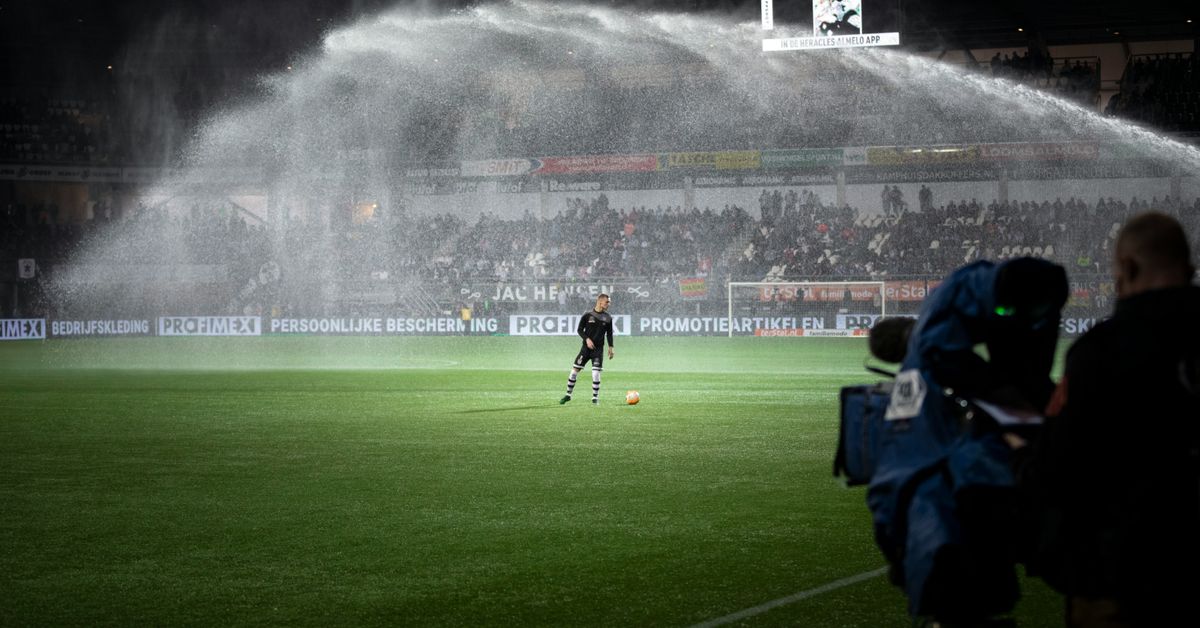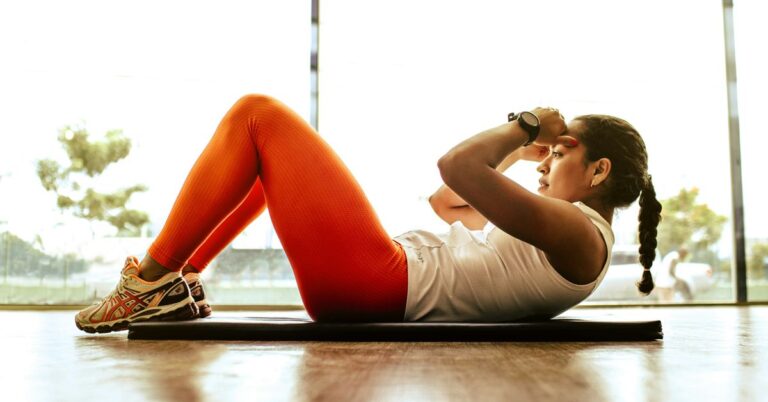Introduction: The Foundation of Performance
Every athlete, at some point, has faced the daunting reality of training. Whether you’re a seasoned professional or an enthusiastic amateur, the question often arises: are you truly conditioning yourself in a way that optimally prepares you for your sport? It’s a thought-provoking dilemma, and one that I’ve grappled with over the years. I remember my own days on the field, where I would put in hours of work, only to discover that I was missing some key elements that could have enhanced my performance dramatically. So, let’s dive into the often-overlooked components of sports-specific conditioning—because, believe me, you might be missing out on something crucial.
Understanding Sports-Specific Conditioning
Before we jump into the nitty-gritty of what you might be overlooking, let’s first clarify what sports-specific conditioning really means. In essence, it’s about tailoring your training regimen to meet the demands of your particular sport. This involves not just physical endurance, but also agility, strength, and skill development. The objective is to enhance performance while reducing the risk of injury—a double whammy of sorts!
The Importance of Individualization
One of the first things that might slip under your radar is the need for individualization in your conditioning program. (I can hear the collective groan from the back row of athletes who think, “Oh, not again!”) But hear me out: just because a training plan works wonders for a teammate or a famous athlete doesn’t mean it’ll work for you. Each athlete has unique physical attributes, psychological factors, and skill sets.
For instance, let’s take two soccer players: one is a sprinter with explosive speed, while the other excels in endurance. If both athletes follow the same conditioning program without modifications, the sprinter might develop strength but sacrifice stamina, while the endurance athlete may not reach their peak in speed. The difference could hinge on small adjustments in their training routines.
Key Components of Sports-Specific Conditioning
Alright, let’s break down some of the key components that you might be neglecting in your quest for peak performance. These elements are crucial, and ignoring them could mean the difference between mediocrity and greatness.
1. Energy System Development
Ah, energy systems. It sounds a bit technical, but let’s make it simple. Your body has three primary energy systems: the phosphagen system, anaerobic system, and aerobic system. Each of these systems fuels different types of physical activity. Depending on your sport, you might need to focus more on one than the others.
For example, sprinters rely heavily on the phosphagen system, which provides energy for short bursts of high-intensity effort. On the other hand, marathon runners predominantly use the aerobic system for longer, sustained activity. If you’re training for a sport that requires quick, explosive movements, you might want to prioritize drills that enhance your phosphagen capacity. This could include short sprints, resistance training, and plyometrics.
2. Functional Strength Training
Let’s be honest—lifting weights is a big part of many training regimens, but not all strength training is created equal. Functional strength training focuses on movements that mimic the actions performed during your sport. This kind of training is designed to improve not just muscle strength, but also coordination, stability, and balance.
I recall a time when I was obsessed with lifting heavy weights at the gym, thinking it would make me a better athlete. What I didn’t realize was that my training lacked specificity. I could lift heavy, but when it came to making quick cuts on the field, I felt like a Bambi on ice. Incorporating exercises like kettlebell swings, medicine ball throws, and bodyweight movements can create a more functional strength base that translates directly to your sport.
3. Agility and Coordination Drills
Let’s face it, agility can be a game-changer. Whether you’re darting down the court or zigzagging through defenders, the ability to change direction quickly is crucial in many sports. Agility drills, such as ladder drills, cone drills, and plyometric exercises, can enhance your quickness and coordination.
There’s nothing quite like the feeling of executing a perfect lateral shuffle or a swift cut that leaves your opponent bewildered. I remember a time in basketball practice when I nailed a crossover so smooth that it felt like I was gliding on ice. That’s the magic of agility training—when it’s done right, it elevates your game.
4. Sport-Specific Skills
While conditioning is essential, the skills pertinent to your sport are equally important. This might seem like a no-brainer, but many athletes focus so heavily on conditioning that they neglect the fundamental skills that define their sport. Whether it’s shooting a basketball, executing a perfect serve in tennis, or mastering a specific technique in wrestling, these skills require dedicated practice.
Imagine a football player who can run a sub-4.5 40-yard dash but can’t catch a pass. That’s like having a Ferrari with no steering wheel—fast but ultimately useless. Regular skill-focused training should be a staple in your routine, ensuring that you can apply your conditioning in game situations.
Addressing Overlooked Aspects of Conditioning
Now that we’ve covered some of the key components, let’s take a closer look at aspects that athletes often overlook. These elements might not be front and center in traditional training discussions, but they can significantly impact your performance.
1. Recovery and Regeneration
Recovery is the unsung hero of sports conditioning. Many athletes tend to focus solely on training and push their limits, often overlooking the importance of rest. I can’t stress this enough: your body needs time to recover and adapt. Without adequate recovery, you risk burnout, injuries, and decreased performance.
Consider incorporating active recovery days into your routine—think light jogging, yoga, or even swimming. These activities can promote blood flow, help flush out toxins, and keep you limber. Remember, it’s not just about how hard you train; it’s also about how well you recover.
2. Nutrition and Hydration
It’s astonishing how many athletes neglect their dietary needs. Think of nutrition as the fuel for your performance engine. If you’re not eating right, it’s like trying to drive a car on empty. Proper nutrition supports energy levels, muscle recovery, and overall health.
Hydration is equally critical—dehydration can impair performance significantly. I learned this lesson the hard way during a particularly grueling summer training camp when I neglected to drink enough water. Let’s just say I spent more time on the sidelines than I’d like to admit. Make sure you’re drinking enough fluids, and consider working with a nutritionist to develop a meal plan tailored to your specific needs.
3. Mental Conditioning
In the world of sports, mental toughness can make or break an athlete. While physical conditioning is paramount, mental conditioning is often the missing piece of the puzzle. Techniques like visualization, mindfulness, and focus drills can enhance your performance under pressure.
Think back to a time when you felt nerves creeping in before a big game. A little mental conditioning can turn that anxiety into a focused drive. I vividly recall a pre-match ritual where I would visualize my performance, picturing every move and play. That practice helped me channel my nerves into positive energy on the field.
Putting It All Together
So, how do you integrate these components into a cohesive conditioning program? It can feel a bit overwhelming, but the key is to develop a structured plan that addresses each area while keeping your sport’s specific demands in mind. Here are some practical steps to consider:
- Assess Your Current Level: Evaluate your strengths and weaknesses in relation to your sport. This will help you identify areas that require more attention.
- Create a Balanced Schedule: Design a training schedule that incorporates energy system development, strength training, agility drills, skill practice, and recovery.
- Monitor Your Progress: Keep track of your workouts, performance metrics, and recovery periods. Adjust your program as necessary based on how your body responds.
- Seek Expert Guidance: Consider hiring a coach or trainer who specializes in your sport. Their expertise can help you design a more effective program.
Conclusion: The Path to Peak Performance
As we wrap this up, it’s essential to recognize that missing key components of sports-specific conditioning can significantly hinder your progress. Don’t be that athlete who trains hard but doesn’t see results. Take the time to develop a comprehensive and individualized conditioning program that addresses energy systems, functional strength, agility, skill development, recovery, nutrition, and mental conditioning.
Ultimately, the goal is to optimize your performance and enjoy the process along the way. I’ve seen countless athletes light up on game day when they’ve put in the work and prepared thoroughly. So, roll up your sleeves, put on your training gear, and start paying attention to those crucial components. Your future self (and your teammates) will thank you.









